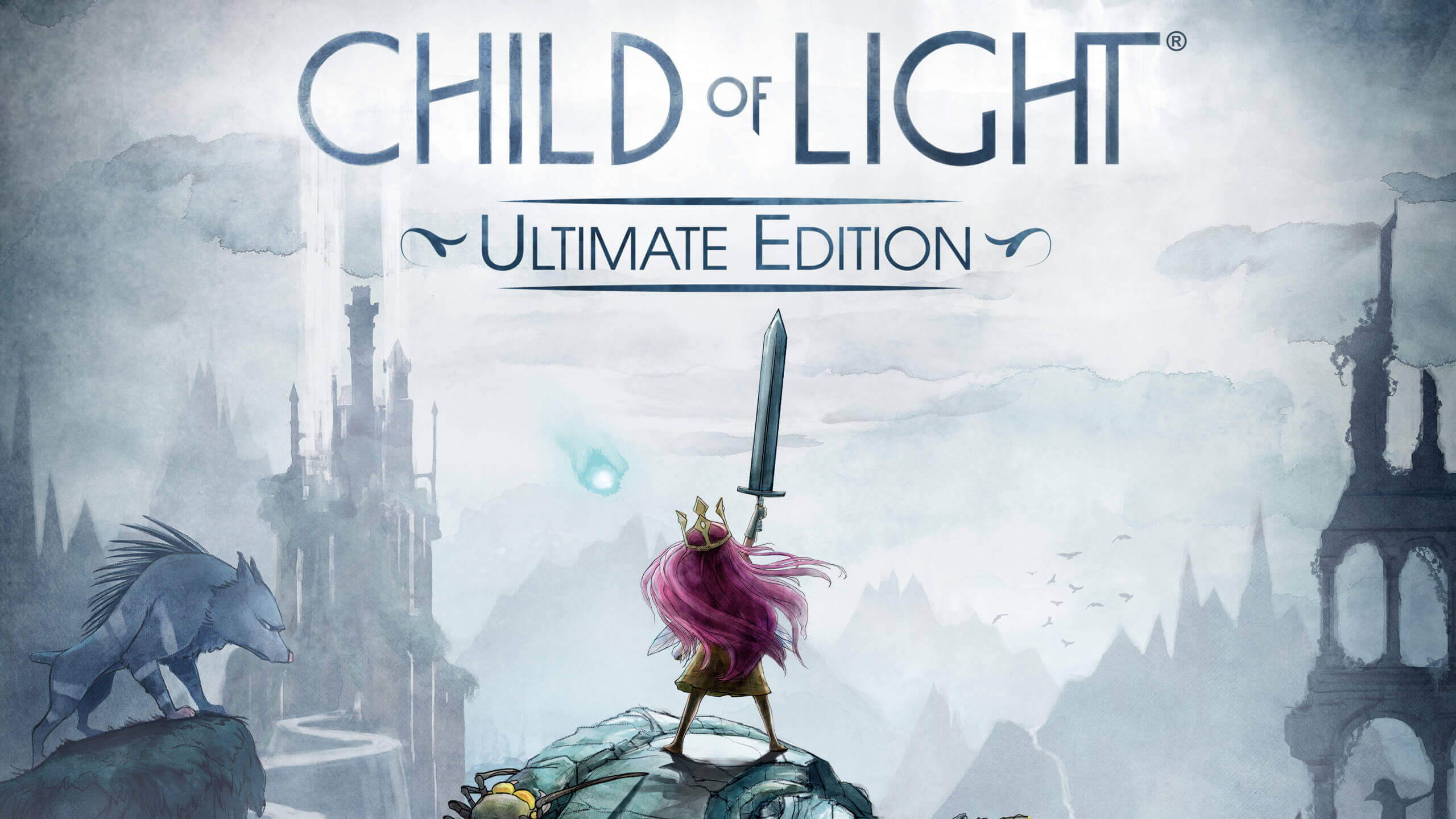Announced in 2013, Ubisoft‘s Child of Light seemed to be a rare, for the time, example of a Western RPG inspired by Japanese classics. Its style was influenced by both Studio Ghibli movies and the work of Yoshitaka Amano; its mechanics – by games like Vagrant Story and Final Fantasy. Developed by an average-sized team at Ubisoft Montreal, it got a surprisingly solid release.
Although, for some reason, the developers made neither a sequel nor any similar-styled project after. But, what was so special about the game and did it ever connect with its audience? Let us journey through its enchanted world – and see before us the answers unfold.
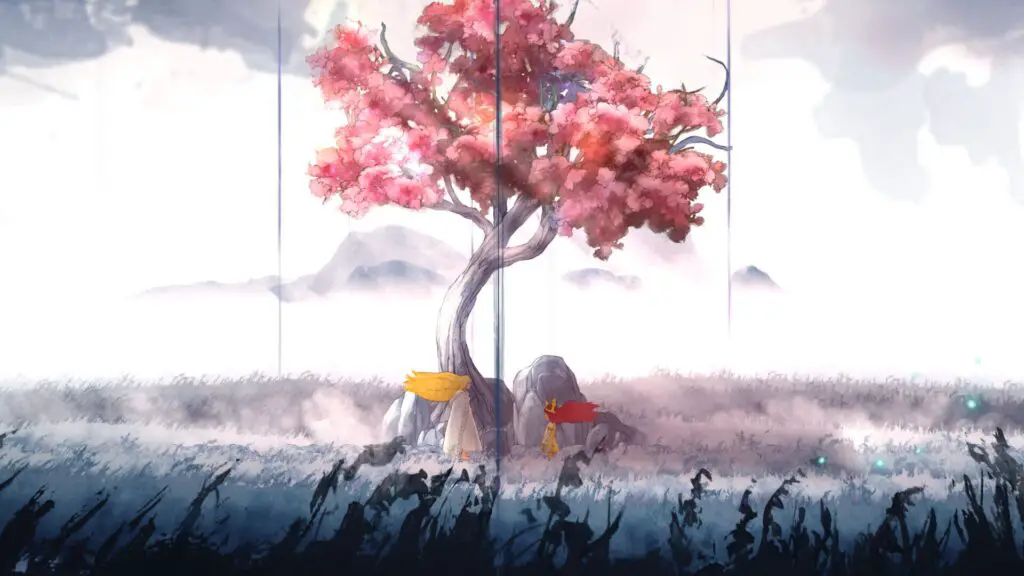
LONG AGO IN THE KINGDOM OF LEMURIA…
The game effectively mixes real life and fairy tale, with a sort of Alice in Wonderland idea in a Brothers Grimm mélange. Our protagonist, Aurora, is a young daughter of an Austrian duke. Her mother died of a mysterious illness, and her father remarried soon after. One day, she wakes up in a strange land, while finding out that in the real world she is bedridden and very sick – so much so that her father is distraught with sorrow.
Together with the wisp Igniculus, Aurora will discover connections between the reality and the fairy tale world of Lemuria. She then must recover a magic mirror, to save a land which was forsaken – restore the “light” of a magic world to, in the real world, awaken.
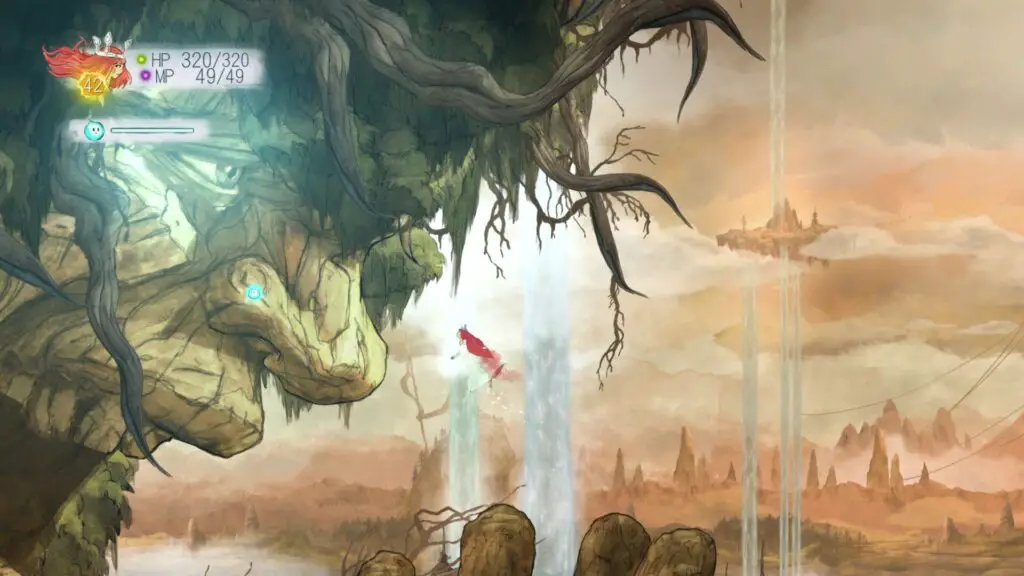
Several other characters will join our little duchess’ party. In addition to the wisp Igniculus, those include the jester Rubella and the dwarf Finn. Along with helping in combat, they’ll have their own narrative or even side-quests – like Rubella’s search for her long-lost brother. The characters add a lot of flavor to the story that’s by itself already engaging and emotional; touching upon topics of growing up and responsibilities. Igniculus can also be controlled by a friend – whose help our mistakes indeed can amend.
SIDE-SCROLLING PLATFORM WITH RPG MECHANICS
The gameplay takes place on a 2D plane, with simple moving crates-based puzzles. Aurora can also fly, as she explores the magical world of Lemuria. Enemies will lie in wait or move around the different stages – and we can backstab them for a surprise attack.
Combat is turn-based; a bar at the screen’s bottom measures each character’s waiting time before they can act. Any action except defending takes time – with stronger magic attacks taking the longest. It reminds of the Active Battle System, seen in games by Square – the characters can’t move, they only can act – indeed a similar affair.
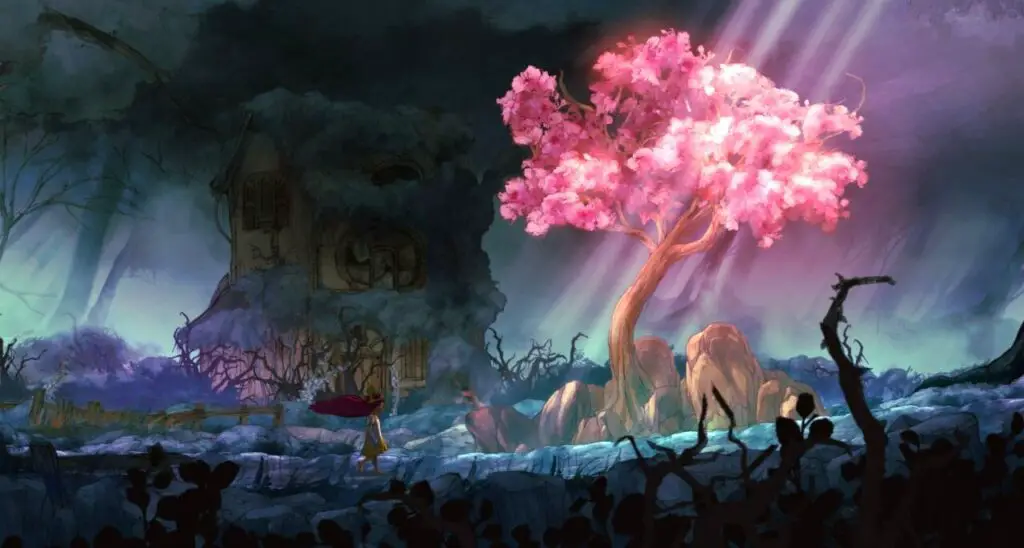
With a foot in the past, featuring streamlined, familiar systems, it feels like the game hasn’t aged one bit. One could almost believe that Child of Light came out last year. The combination of watercolored backgrounds, 3D rotoscoped sprites, and hand-drawn characters during conversations still works incredibly well. Also, it’d be remiss of me not to mention a beautiful soundtrack by Canadian singer Cœur de pirate; which sometimes employs a full orchestra. Like the famous Gris, this Ubisoft game shines through – with a beautiful look and a timeless simplicity too.
ELEGANCE IN SIMPLICITY
I’ve asked myself before writing this piece: what was so special about Child of Light? Describing its mechanics, it does sound like an ordinary RPG, with platforming and puzzles; not far removed from several classic 90s Squaresoft titles. The gameplay is basic: there is levelling, but each character has fixed items and weapons, and only two of them can fight at a time. However, while combat feels run-of-the-mill, the atmosphere differs from that of a regular JRPG. It’s got a different mood, with the narrative delicately woven through the passage from childhood to adulthood; and restoring balance, broken by other’s mistakes. At times, it’s so unique a game – no other JRPG can ever feel the same.
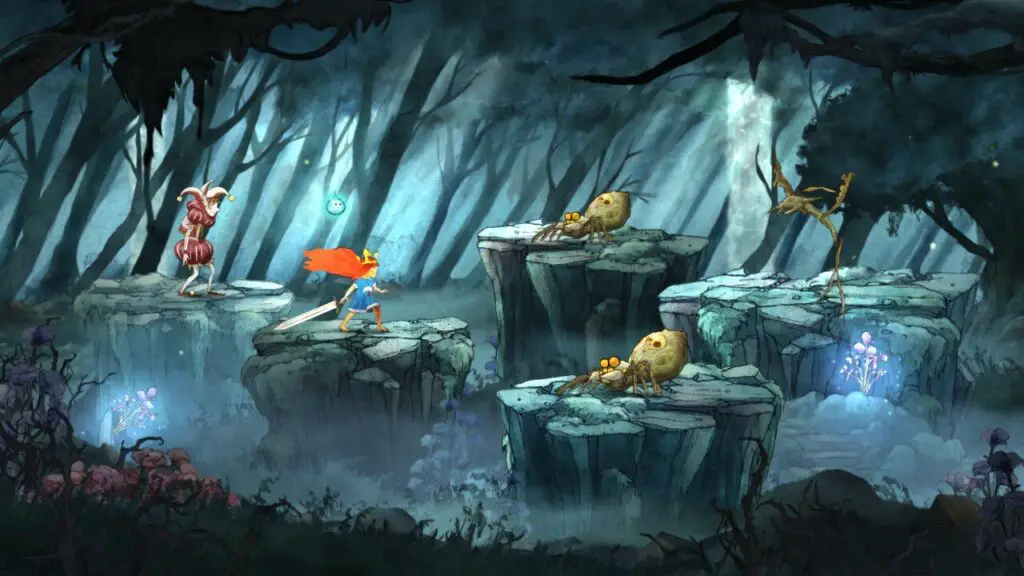
There truly haven’t been many RPGs like Child of Light in the almost ten years since its release. It feels like an indie game – with an almost-AAA production value: from its graphics to its sonorous sound department. With this project, Ubisoft managed to reach that rare and delicate balance between the touch of a small team and the support of a big company’s finances. With the game being very successful, there had been talks of a sequel. Unfortunately, the developer said many times that the company seems too focused on making money from “games as a service” (looking at you, Assassin’s Creed…). The original team was scattered to the wind – and the hopes for a sequel seem to, sadly, be left unfulfilled.
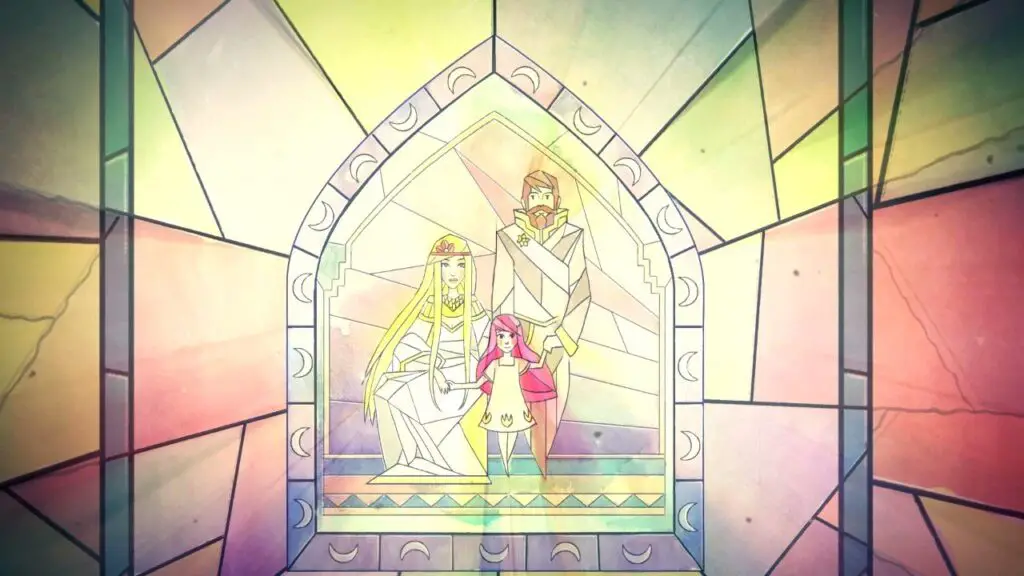
We may be left without a sequel to Child of Light but, truth be told, the original is still very much playable. Perhaps because it was allowed to live in a fairy tale-like space: forever ageless and, like its first day, so full of grace.

